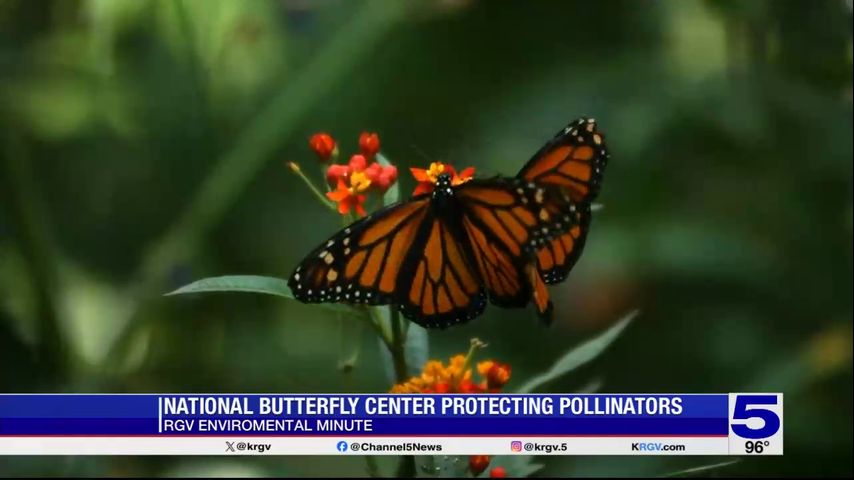RGV Environmental Minute: The National Butterfly Center discusses pollinators in the Valley
Without bees, butterflies, and birds, the world would be in big trouble and lose crops, vegetables, fruit, and seeds.
The sad reality is that animal pollinators are facing many challenges in today's modern world.
A local environmental center is doing its part to protect these much-needed pollen-spreading friends, and they tell us what we can do to help in the latest RGV Environmental Minute.
Ten years ago, the North American Butterfly Association broke ground in the city of Mission for what has become one of the largest native plant botanical gardens in the United States — the National Butterfly Center.
“The National Butterfly Center is all about environmental conservation,” interim executive director Stephanie Lopez said. “We are 100 acres dedicated to our pollinators, our butterflies, birds, and all the wildlife in the Rio Grande Valley.”
According to The United States Department of Agriculture, scientists estimate that one out of every three bites of food we eat exists because of animal pollinators such as bees, butterflies, moths, birds, and other insects.
“Pollinators are the keystone species,” Lopez said. “If butterflies are doing well, we are doing well. They are very important to protect. Our pollinators are what give us food, clothing.”
Pollinators are facing habitat loss, disease, pesticides and other environmental contaminants. All these have contributed to the decline of many species over the years.
“It's very important that the community understand that gardens, native plant gardens, are the most important thing to create,” Lopez said. “It's important that they know that even the smallest garden, and a couple of pots outside your house, are going to be the ones that make a difference and are very important.”
More information on the National Butterfly Center is available online.
Watch the video above for the full story.





